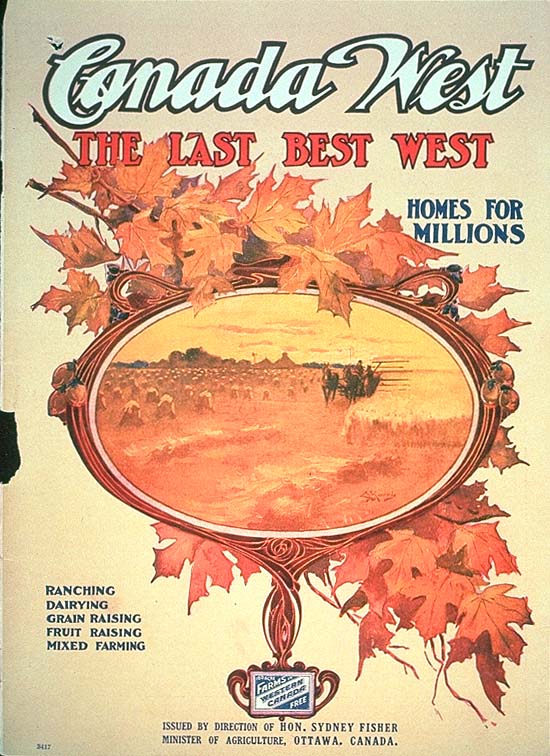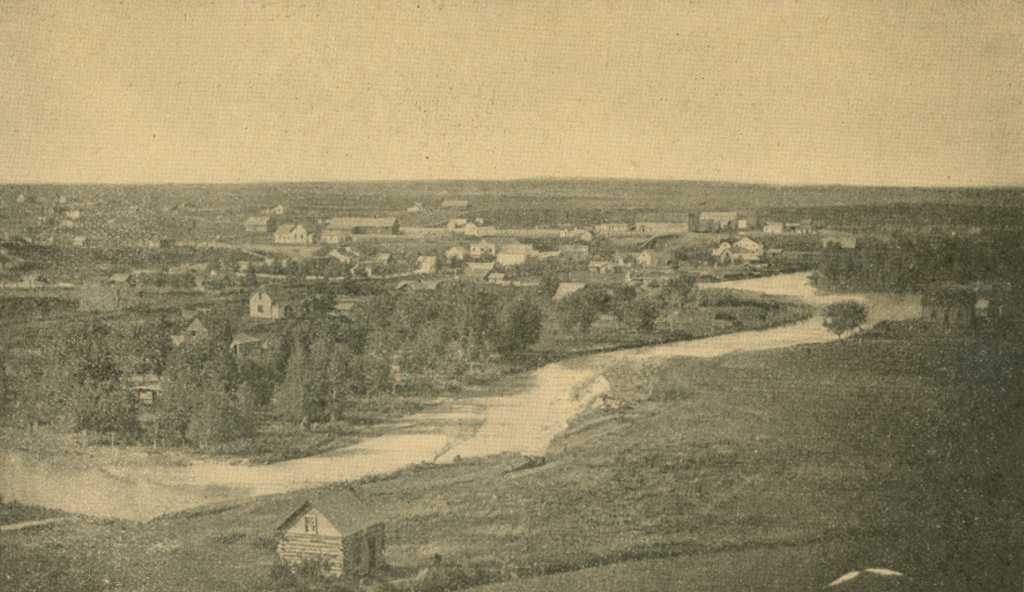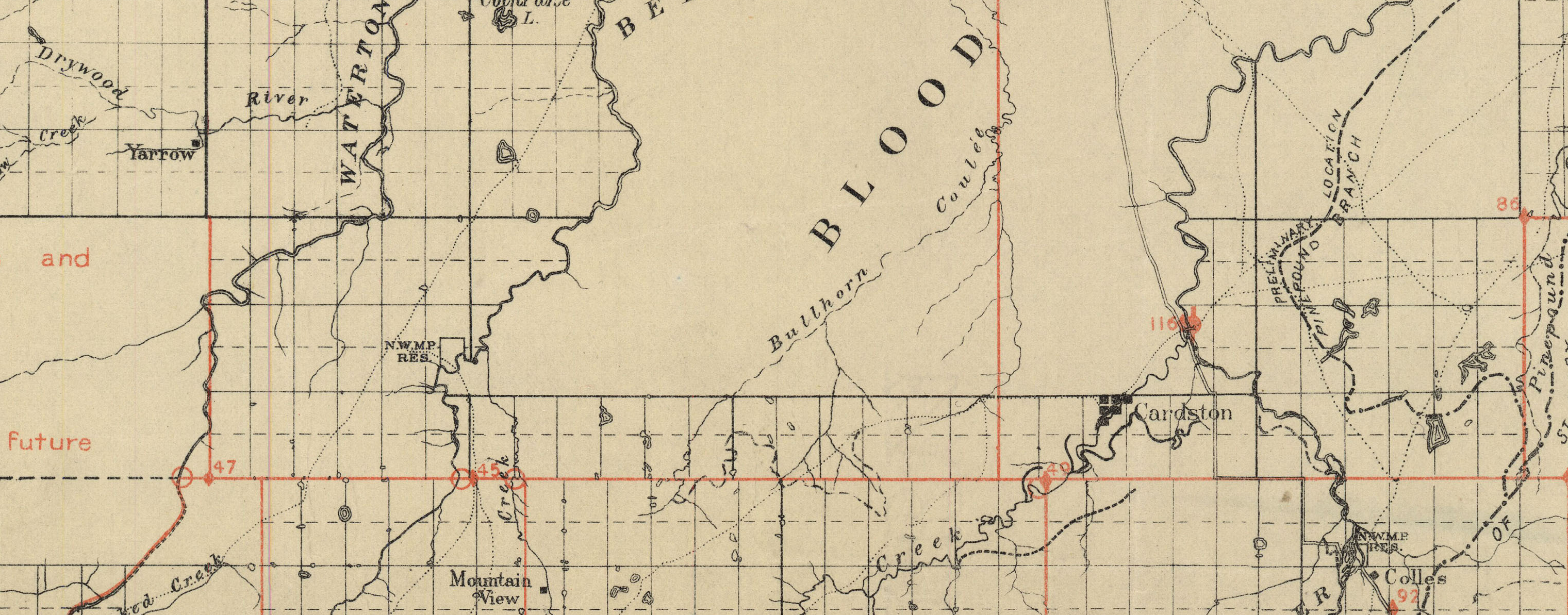This post is part of series on periodizing Mormon settlement in Canada. The second period of settlement occurred between 1890 and 1898. By 1890, the Mormon areas of the western United States had reached a “saturation point,” where the bulk of the usable land was occupied and the population no longer supported subdividing for more farms.1 This coincided with the 1890 census, which ultimately declared the American frontier closed.2 The Church in Salt Lake began investing financially in the Canadian settlement. They purchased the Cardston town site and leased another 18,000 acres to provide employment to the settlers.3 Hicken described the continued investment in the Canadian settlements by the church as an “insurance policy.”4 It would allow the growing church population a place to spread outside of Utah.

At the same time, the Canadian government was actively trying to court settlers. Starting in 1890 the Canadian Department of Agriculture offered immigrants a financial bonus of $15 for each family head and $7.50 for each family member that settled in Canada. This incentive helped new Mormon settlers after 1890.6 Despite this, the flow of new Mormon immigrants had slowed to a trickle compared to the pre-1890 rush of settlers.7 According to Hicken, between 1890 and 1898 the Mormon population in the Cardston area only grew from 1000 to 1200 settlers.8 Over these years, the foundation was laid for later periods of more intensive immigration by Mormon settlers from the United States.9 The discovery of significant amounts of coal in Lethbridge, led the Galt family’s business interests to build a rail link to Great Falls. The development of this rail line resulted in approximately one-million acres of land grants to the Galt operated Alberta Railway and Coal Company.10 Their business manager, Charles A. Magrath, and the Church of Jesus Christ of Latter-day Saints already had a relationship due to some earlier land deals.11 It is not surprising that they saw in the Mormons an opportunity to settle the land they had acquired via land grant. During this time settlements in Aetna, Leavitt, Mountain View, Caldwell and the Kimball area were established.12

The Latter-day Saints had extensive experience with irrigation in the United States. Card himself had some experience during his time in Cache Valley, Utah.14 He also oversaw limited irrigation projects in the Cardston area in 1891 and 1894.15 In his journal on October 25, 1894, he mentions taking a couple of church officials “up St. Mary’s River to show them that water could be taken out for irrigation purposes.”16 Galt, Magrath, Card and Latter-day Saint Church Apostle, John W. Taylor, started work on planning a large-scale irrigation project as early as 1891.17 These early attempts stalled due to various factors. The election of the Liberals to the federal government in 1896 and Clifford Sifton’s role as Minister of the Interior changed the situation significantly enough to make the project feasible again. This included providing subsidies and approvals.18 By June 1898, the new canal project was approved by all parties. It would use Mormon labour in exchange for a mix of cash and land. Two parcels being large enough for settlement as towns.19 August 26, 1898 Card wrote in his journal, “We loaded up plows, scrapers, grain, etc., and made a start … I plowed the first three furrows.”20 This marked the beginning of the next period of Mormon settlement in Canada, the irrigation period.
Featured image source.21
- John R. Hicken, “Events Leading to the Settlement of Cardson, Magrath, Stirling and Raymond, Alberta” (Logan, Utah, Utah State University, 1968), 53. [↩]
- Frederick Jackson Turner, The Frontier in American History (New York: Henry Holt and Company, 1920), https://archive.org/details/frontierinameric01turn/page/n5, 1. [↩]
- Arlend James Hudson, Charles Ora Card: Pioneer and Colonizer (Cardston, Alberta, 1963), 127. [↩]
- Hicken, 54. [↩]
- https://www.historymuseum.ca/cmc/exhibitions/hist/advertis/ads1-01e.html [↩]
- Lawrence B. Lee, “The Mormons Come to Canada, 1887-1902,” The Pacific Northwest Quarterly 59, no. 1 (January 1968): 14. [↩]
- Hicken, 55. [↩]
- Ibid., 55 [↩]
- Lowry Nelson, The Mormon Village (Salt Lake City, Utah: University of Utah Press, 1952), 239. [↩]
- Hicken, 57. [↩]
- Hoger B. C. Tychsen, “The History of Raymond, Alberta, Canada” (Utah State University, 1969), 17. [↩]
- Picturesque Cardston and Environments (Cardston Record, 1900), 26-38. [↩]
- Picturesque Cardston and Environments (Cardston Record, 1900), 9. [↩]
- Hudson, 139-140. [↩]
- Ibid., 139. [↩]
- Donald G. Godfrey and Melva R. Witbeck, eds., The Journal of Charles Ora Card: September 14, 1896 to July 7, 1903, 1981, 144. [↩]
- A. A. Den Otter, Civilizing the West: The Galts and the Development of Western Canada (Edmonton, Alberta, Canada: University of Alberta Press, 1982), 206. [↩]
- Ibid., 222. [↩]
- Ibid., 222-224. [↩]
- Godfrey and Witbeck, eds., The Journal of Charles Ora Card, 227. [↩]
- https://digitalcollections.ucalgary.ca/asset-management/2R3BF1F3LA18N [↩]

